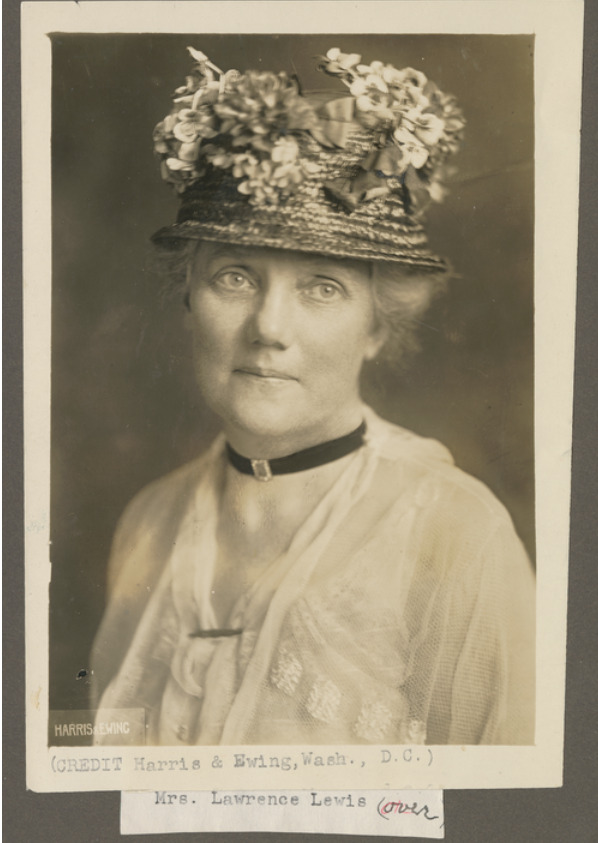My United States History course introduced me to women’s activism. Looking at the women who helped shape our nation rather than the well-known men was exceptional. This newfound passion made me want to further analyze women’s activism in a society that discouraged their voices.
The historical digital project is ‘In Her Own Right: A Century of Women’s Activism, 1820-1920’, launched in 2019. This project is affiliated with the organization Philadelphia Area Consortium of Special Collections Libraries (PACSCL). It was not done alone; there were several contributors who helped to make the digital history project, such as the Humanities Collections and Reference Resources Foundations Grant from the National Endowment for the Humanities. The ongoing project technology development was driven by a group of staff, with the application development by Neomind Labs.
This project is an excellent way to look at women’s activism that shaped the world from 1820 to 1920 through a digital archive. It uses digitized primary sources, including documents and pictures, to explore how women fought for their rights before they had the right to vote. In addition to being a digital archive, it incorporates exhibits, biographical profiles, an interactive map, visualized subject guides, research guides, introducing women’s activism, addressing historical inequality, and classroom resources. The project was made to make friends across racial lines, practice self-improvement in the progressive era, and confront race. The various tabs show the overall methodology of the project.
The project aims to give the public personal stories of women from the 1820s to the 1920s on their journey of women’s activism through primary documents & visual tools for research and education. The argument of the digital history project is to explore women who worked for their rights and the rights of others before they could even vote, as shown in primary documents and images. It changes the historiography of women’s history. It allows the voices of women’s stories to be at the forefront. They are using feminism theory to base their project on women’s studies and encourage people to look at women’s experiences and physical attributes in a different light than before. Women studies in history are less explored, particularly African American women because they are viewed as less valued than and not crucial in shaping our society. The main intention of this digital project is to showcase the historical context of women’s activism from the 1820s to the 1920s.
The biographical profiles highlight individual women from the 1820s to the 1920s and the activist movement they pushed for. These biographical profiles look closer into specific women’s ideals, beliefs, and values that drove them to fight for what they believe in and the movement.


This ties directly into the exhibits, which show an overview of women’s activist movements throughout the century illustrated through documents, images, and text. The exhibits give an insight into women’s choices. It showed what they were fighting for and why during a movement where women were central to success. There is a direct link to the biographical profiles, but it looks at the broader view of the movement rather than just the one woman involved.
Exploring the interactive map visually shows the user where each primary document or image came from worldwide in relation to the exhibits and the biographical profiles. This is where it is evident which parts of the world have more documentation about women’s activism in history. All three of these tabs in the digital archives connect in one way or another. The visualized subject guide allows the users to visually explore the subjects addressed within the project’s database using the platform InfoVis Toolkit. It provides the topics that are looked at in the project and how each subject is linked with the others, and as you press each subject, it gets narrowed down to specific individuals. This takes all the information the project collects and puts it into an interactive way to show how each subject connects.
There are many strengths presented in the projects. One strength is laying out each element into categories for easy access. This way it makes finding the material helpful. When clicking on the exhibit or biographical profiles tabs, the subtabs showcase the other individual profile or exhibits within the project on the side for easy access to continue exploring. There are many hyperlinks to more research and readings about the subject for further research. Another thing that I found to be successfully executed is the interactive map. However, the landing page could be made more straightforward. When clicking on the tab for the interactive map, it will take you to an image of the map with the link instead of going directly to the map. This can also be seen with the visualized subject guide. Even though there are some flaws with the design, the content’s goal is to make learning the information more interactive.
Along with all the project’s strengths, there were some ways in which it failed to achieve its goals. I do not fully understand the data tab’s purpose in serving the overall project. I feel as though the student and teacher tab and the classroom resources tab could have been combined into one tab falling under the same topic of classroom resources. The overall project successfully aims to illuminate the centuries-long women’s activism in the fight for their rights in a world where women could not vote through visual, textual primary sources and interactive sources.
